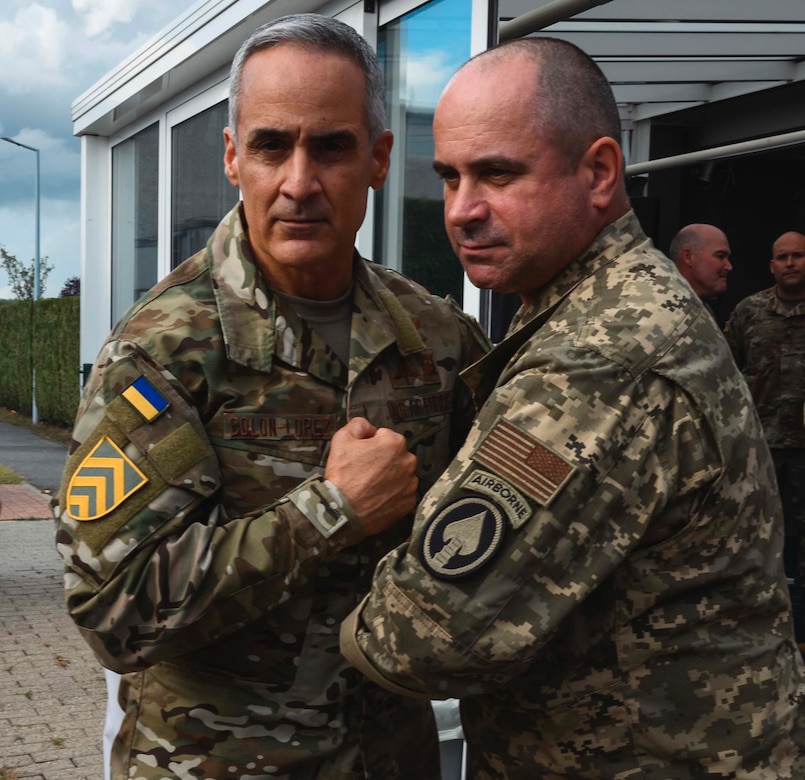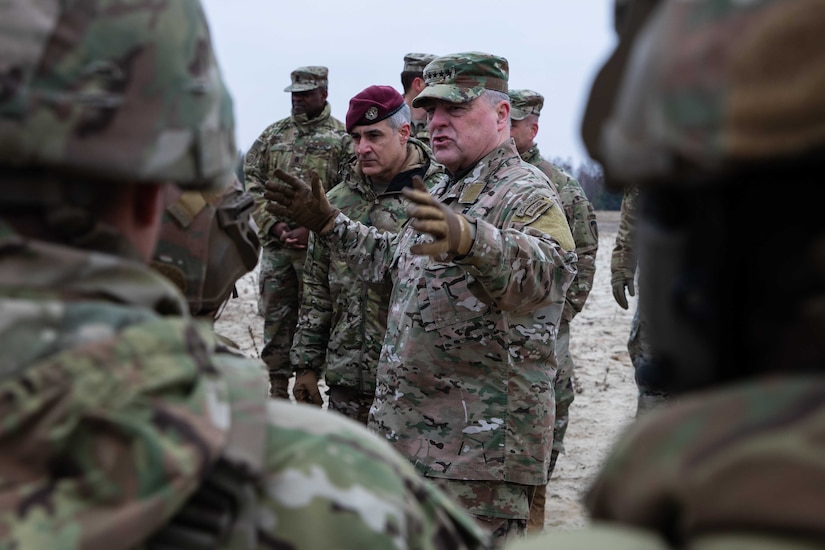Jim Garamone

Since 2014, the United States has sent Ukraine more than $32.4 billion in security assistance, and while the transfer of equipment is important in Ukraine's defense, the training aspect of this aid may have longer term implications.
These military capabilities — including Javelins, tanks, air defense systems and more — have been crucial, but Ukraine's investment in developing a noncommissioned officer corps may be the key to victory against the Russian invader.
The Senior Enlisted Advisor to the Chairman Ramón "CZ" Colón-López said that looking at a year of conflict in Ukraine since Russia invaded, he has been convinced of "the decisive advantage that the human brings" to combat.
The SEAC — who spent most of his career in special operations — noted that the No. 1 rule in his military community "is that humans are more important than hardware."
Colón-López spoke before traveling to Europe to meet with his counterparts among the NATO frontline states. "That is true, not only for special operations, but for conventional forces, because you can have the best technology in the world, but if you don't have the will and the pride to fight for your nation, you're going to be on the losing end of the equation," he said. "We have seen this play over and over again."
One lesson of the conflict in Ukraine is that government and military leaders must prioritize the training, development and education of service members, he said. "At the end of the day, the rivets and steel is not as important as the flesh and bone if the flesh and bone is not willing to go all-in in the execution of the wartime mission," he said.
Russian President Vladimir Putin expected an easy and quick war on Ukraine, U.S. officials have said. Ukraine and Russia had many of the same capabilities, including T-72 tanks, BMP infantry fighting vehicles, air defenses and more. Still, Russia — with more money — had the advantage there, as well.
"It's like when you have two football teams. Everybody's got the same equipment; they got the pads to helmets; they got a coach; they got the headsets and everything else," Colón-López said. "But it all boils down to the execution and the strategy that actually decides who is the victor in that game. It's no different in the military. And that is exactly what the Ukrainians have done."
The U.S. military relationship with Ukraine began in 1993 soon after the Soviet Union broke apart and the nation declared its independence. Ukraine joined the State Partnership Program and partnered with the California National Guard — with whom they are still partnered.
Ukraine — and the rest of the nations that were in the Soviet orbit — used Soviet tactics and doctrine. When those nations participated in training sessions with U.S. and other NATO forces — most notably in an exercise at Fort Polk, Louisiana, in 1995 — they invariably got waxed. Many of the nations aspired to join NATO, and they took to learning the NATO playbook.
"We decided to go ahead and start partnering with a lot of those regional partners to be able to help them break away from the Soviet model," the SEAC said. "In the meantime, we had sporadic engagements."
The Ukrainian military was still very "officer-centric" and not responsive or agile. If the officer went down, the unit had no idea what to do. "The NCOs … were not empowered, they were not entrusted, and they were not properly trained or educated to be autonomous on the battlefield," he said.
All this changed after Russia invaded Ukraine in 2014, illegally annexed Crimea, and fomented uprisings in the eastern provinces of the nation. "The government of Ukraine decided to go all in on an NCO development model," Colón-López said. "They wanted to westernize their approach. So, immediately, they enlisted the help of the United States and also of NATO to go ahead and shift their mechanism and their procedures."
The idea was to empower junior leaders, to have them operate within the commanders' intent, to display initiative, and to accomplish the missions. Colón-López said NATO's Defense Education Enhancement Program was key to developing the capability.
Ukraine developed three service-specific NCO training centers. The military leaders introduced a new NCO education and training system. "Everything that they did in that curriculum and the syllabus was directly adapted from the NATO model to be able to go ahead and create interoperable NCOs — Ukrainian NCOs to be able to go ahead and partner and train with other NATO entities, even though they're not part of NATO," he said.
Like the United States and other NATO nations, NCOs were responsible for training new recruits and developing new small-unit tactics and being integral parts of the chain of command. "Right now, their basic training is about 2 1/2 to three months in duration, and it heavily focuses on the critical combat skills," Colón-López said. "That was one of the key factors when they started taking in their recruits, that they immediately started implementing the ethos and the change in these young people's minds to be able to go ahead and execute any type of wartime mission.
"That is the force that you see fighting today," he continued.
Compare that to what the Russians are doing. The Russians still use conscription. They stint on training. The Russian military is still officer centric. They use tactics that haven't changed since World War II.
"It is the human dynamic that is actually tipping the scales on victory versus failure out on that battlefield," he said. "It is definitely a decisive advantage that the Ukrainians have that the Russians do not."
The combat action in Ukraine has many military leaders looking. "Our partners are listening, and they're wanting to learn, and a lot more officers are being open to the idea that … maybe we need to start educating [NCOs] more, so that they're critical thinking thinkers on this hybrid battlefield," the SEAC said. "That is going to be the way of the future."


No comments:
Post a Comment